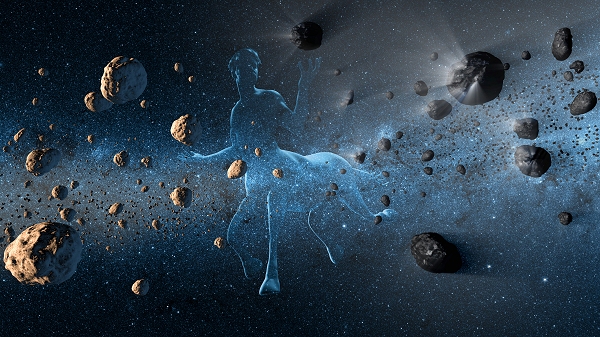It looks like you're using an Ad Blocker.
Please white-list or disable AboveTopSecret.com in your ad-blocking tool.
Thank you.
Some features of ATS will be disabled while you continue to use an ad-blocker.
7
share:

www.jpl.nasa.gov...
The true identity of centaurs, the small celestial bodies orbiting the sun between Jupiter and Neptune, is one of the enduring mysteries of astrophysics. Are they asteroids or comets? A new study of observations from NASA's Wide-field Infrared Survey Explorer (WISE) finds most centaurs are comets.
Until now, astronomers were not certain whether centaurs are asteroids flung out from the inner solar system or comets traveling in toward the sun from afar. Because of their dual nature, they take their name from the creature in Greek mythology whose head and torso are human and legs are those of a horse.
"Just like the mythical creatures, the centaur objects seem to have a double life," said James Bauer of NASA's Jet Propulsion Laboratory in Pasadena, Calif. Bauer is lead author of a paper published online July 22 in the Astrophysical Journal. "Our data point to a cometary origin for most of the objects, suggesting they are coming from deeper out in the solar system." "Cometary origin" means an object likely is made from the same material as a comet, may have been an active comet in the past, and may be active again in the future.
Infrared data from NEOWISE provided information on the objects' albedos, or reflectivity, to help astronomers sort the population. NEOWISE can tell whether a centaur has a matte and dark surface or a shiny one that reflects more light. The puzzle pieces fell into place when astronomers combined the albedo information with what was already known about the colors of the objects. Visible-light observations have shown centaurs generally to be either blue-gray or reddish in hue. A blue-gray object could be an asteroid or comet. NEOWISE showed that most of the blue-gray objects are dark, a telltale sign of comets. A reddish object is more likely to be an asteroid.
"Comets have a dark, soot-like coating on their icy surfaces, making them darker than most asteroids," said the study's co-author, Tommy Grav of the Planetary Science Institute in Tucson, Ariz. "Comet surfaces tend to be more like charcoal, while asteroids are usually shinier like the moon."
The results indicate that roughly two-thirds of the centaur population are comets, which come from the frigid outer reaches of our solar system. It is not clear whether the rest are asteroids. The centaur bodies have not lost their mystique entirely, but future research from NEOWISE may reveal their secrets further.
It's nice to see the good old WISE mission still delivering new results. It's news to me that comets and asteroids have typical colouration (reddish for asteroids and blue-gray for comets).
I'd like to see the reaction of Electric Universe supporters to this piece of news, and to NASA saying that comets are dark like soot. The EU supporters claim that comets being dark destroys the standard model, but here is NASA talking about it like it's something that doesn't present any problems. www.nasa.gov...
edit on 26-7-2013 by wildespace because: (no reason
given)
new topics
-
Has Tesla manipulated data logs to cover up auto pilot crash?
Automotive Discussion: 1 hours ago -
whistleblower Captain Bill Uhouse on the Kingman UFO recovery
Aliens and UFOs: 6 hours ago -
1980s Arcade
General Chit Chat: 8 hours ago -
Deadpool and Wolverine
Movies: 9 hours ago -
Teenager makes chess history becoming the youngest challenger for the world championship crown
Other Current Events: 10 hours ago -
CIA botched its handling of sexual assault allegations, House intel report says
Breaking Alternative News: 11 hours ago
7
